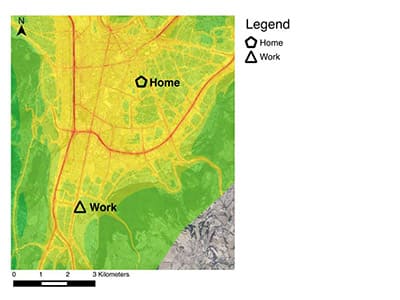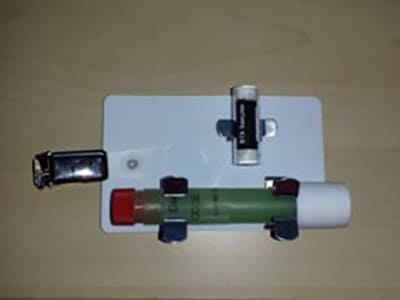Methods to analyze exposure
Initial results of SEPAGES pilot study: What methods can be used to estimate exposure to environmental factors?
Between 2012 and 2014, we conducted a pilot study to test the feasibility of setting up the SEPAGES cohort. Forty women living in the Grenoble metropolitan area were included and followed a protocol similar to that of SEPAGES volunteers during pregnancy. One of the objectives of this feasibility study was to test the method of measuring exposure to air pollution and endocrine disruptors. Two scientific articles were published on this subject, the main results of which we present below.
Estimating exposure to air pollution
The first article compares several methods for estimating exposure to air pollution. The three methods compared are (1) estimating exposure to air pollution by considering only the level of outdoor air pollution and using data from Atmo Auvergne Rhône-Alpes corresponding to the home address, (2) estimating exposure by integrating the displacements of volunteers using GPS and diary data combined with outdoor-air data from Atmo Auvergne Rhône-Alpes, and (3) estimating exposure to air pollution using data from individual dosimeters worn by volunteers, such as passive NO2 sensors. The main result is that the third method (the individual dosimeter) is not consistent with the first two methods. This result shows the importance of personal measurements that consider both outdoor exposure (during displacements, for example) and indoor exposure (at home, at work, at friends) to estimate exposure over short periods of time. Such measurements are made possible by individual dosimeters worn for several days.

Modèle extérieur statique

Modèle extérieur + GPS

Dosimètres personnels
Estimating exposure to endocrine disruptors
The second article compares several methods for estimating exposure to endocrine disruptors. In the SEPAGES pilot study, we asked each woman to collect urine samples over a period of one week, obtaining an average of 70 samples per woman. From this sampling, we created for analysis “daily” samples (grouping together all samples collected over the course of a given day) and “weekly” samples (grouping all samples acquired during the week). Subsequently, endocrine disruptors were assessed either from a single urine sample, a daily sample, or a weekly sample. The main result indicates that measuring endocrine disruptors during pregnancy from a single sample is insufficient to accurately estimate the average exposure to endocrine disruptors. Depending on the endocrine disruptor, daily or weekly samples are required. Collecting several urine samples is therefore vital for accurately estimating the exposure to most endocrine disruptors.

Resultats perturbateurs
For further:
Marion Ouidir, Lise Giorgis-Allemand, Sarah Lyon-Caen, Xavier Morelli, Claire Cracowski, Sabrina Pontet, Isabelle Pin, Johanna Lepeule, Valérie Siroux, Rémy Slama – «Estimation of Exposure to Atmospheric Pollutants During Pregnancy Integrating Space-Time Activity and Indoor Air Levels: Does It Make a Difference?» Environ Int, 2015 November.
Read the article
Céline Vernet, Claire Philippat, Antonia M Calafat, Xiaoyun Ye, Sarah Lyon-Caen, Valérie Siroux, Enrique F Schisterman, Rémy Slama - «Within-Day, Between-Day, and Between-Week Variability of Urinary Concentrations of Phenol Biomarkers in Pregnant Women» Env Health Perpect, 2018 March.
Read the article